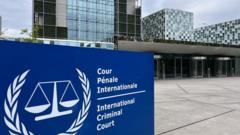The recent arrival of white Afrikaners as U.S. refugees has spotlighted the contradictions in immigration policies that favor select groups while targeting others for deportation.
Inside the Inconsistencies of Trump's Immigration Approach

Inside the Inconsistencies of Trump's Immigration Approach
The Trump administration shows a stark contrast in its treatment of refugee groups, favoring white South Africans while deporting vetted Afghans.
On the same day that dozens of white South Africans arrived in the United States as refugees, invited personally by President Trump, his administration announced plans to deport thousands of Afghans starting this summer. This sudden policy shift underscores the inconsistencies within Trump's immigration agenda, which is characterized by a recent focus on white Afrikaners claiming racial persecution in their home country.
The arrival of these Afrikaners on a government-funded chartered jet marked a stark contrast to the fate of many other migrant groups. Notably, Afghans who previously worked closely with U.S. forces during the 20-year war are now facing deportation, despite having received “temporary protected status” after the chaotic withdrawal from Afghanistan in 2021. The implications of this policy highlight the complexities of defining who is deemed the “right” immigrant under the Trump administration's framework.
Trump's stringent immigration approach has consistently been a cornerstone of his political strategy, appealing to a voter base frustrated with immigration issues. As he seeks to implement one of the largest deportation operations in U.S. history, his administration has also targeted legal and illegal immigrants alike. In fact, his first executive order upon entering his second term involved the suspension of all refugee resettlement into the U.S.
Questions arise concerning the criteria used for the administration’s immigration decisions, particularly the preferential treatment seen in the case of the Afrikaner refugees. Christopher Landau, the Deputy Secretary of State, stated that the newly arrived group underwent a thorough vetting process, suggesting a differentiation in the validation of immigrants based on race and national origin.
This situation raises important discussions about the broader implications of such policies on America’s immigration landscape, reflecting underlying societal tensions and establishing a need for a consistent approach moving forward.
The arrival of these Afrikaners on a government-funded chartered jet marked a stark contrast to the fate of many other migrant groups. Notably, Afghans who previously worked closely with U.S. forces during the 20-year war are now facing deportation, despite having received “temporary protected status” after the chaotic withdrawal from Afghanistan in 2021. The implications of this policy highlight the complexities of defining who is deemed the “right” immigrant under the Trump administration's framework.
Trump's stringent immigration approach has consistently been a cornerstone of his political strategy, appealing to a voter base frustrated with immigration issues. As he seeks to implement one of the largest deportation operations in U.S. history, his administration has also targeted legal and illegal immigrants alike. In fact, his first executive order upon entering his second term involved the suspension of all refugee resettlement into the U.S.
Questions arise concerning the criteria used for the administration’s immigration decisions, particularly the preferential treatment seen in the case of the Afrikaner refugees. Christopher Landau, the Deputy Secretary of State, stated that the newly arrived group underwent a thorough vetting process, suggesting a differentiation in the validation of immigrants based on race and national origin.
This situation raises important discussions about the broader implications of such policies on America’s immigration landscape, reflecting underlying societal tensions and establishing a need for a consistent approach moving forward.






















